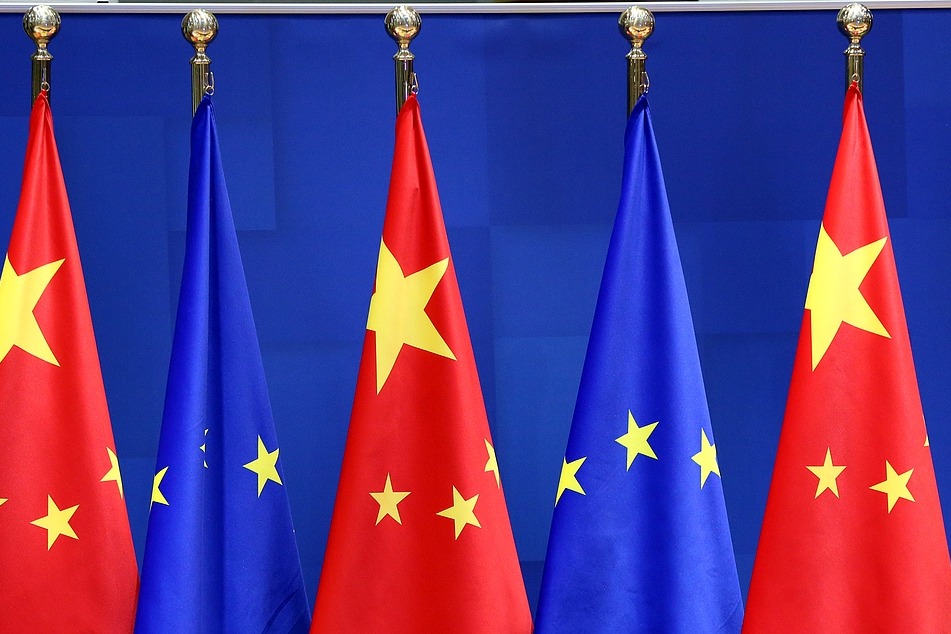Manufacturing the new order


Trump administration is redirecting the US economy from consumption-led toward production-led growth in a bid to reclaim its global dominance
Since the 2008 financial crisis, the post-Cold War global economic order, primarily built and sustained by the United States, has faced mounting challenges. The rise of Trumpism and its associated policies have emerged as significant catalysts accelerating the decline of the economic order. Particularly in recent years, Washington has increasingly recognized manufacturing as crucial to maintaining its hegemonic status. However, the country lost its position as the world's largest manufacturing nation to China in 2010. Revitalizing domestic manufacturing has become the top concern permeating the Donald Trump administration's domestic and foreign economic policies.
During his second term, Trump has introduced a domestic policy package centered on tax cuts, support for traditional energy, regulatory rollbacks and the bolstering of the defense industry, aimed at attracting foreign investment, spurring innovation, and advancing the industrial strategy of reshoring production.
First, cutting corporate taxes. After Trump won the presidential election, he pledged to reduce the corporate tax rate from 21 percent to 15 percent, expand R&D tax credits, and create a favorable policy environment for building modern factories with advanced manufacturing capabilities. This clear pro-industry stance prompted major investment announcements within his first 100 days back in office. Following the artificial intelligence infrastructure project called Stargate, companies such as Apple and NVIDIA each announced plans to invest over $500 billion in the US over the next four years, while semiconductor heavyweight TSMC pledged an additional $100 billion, in response to the US manufacturing revival strategy.
Second, developing traditional energy. The US is the world's largest producer of oil and natural gas, and it has approximately 22 percent of the global coal reserves, and the Trump administration is introducing policies to develop the traditional energy sector. These include relaxing environmental regulations, streamlining approval processes, and encouraging oil and gas exploration and production. The goals are to reassert US dominance in the global energy market, alleviate domestic inflation, and crucially, meet the soaring demand for vast amounts of inexpensive electricity driven by emerging industries such as AI and cryptocurrency — thereby guaranteeing materialized manufacturing investments.
Third, relaxing financial and tech regulations. The Trump administration contends that excessive regulation raises business costs and stifles technological innovation. To reduce oversight in finance, the Department of Justice dissolved the National Cryptocurrency Enforcement Team in April. In the tech sector, Trump promptly rescinded the Joe Biden administration's AI regulation executive order and has repeatedly criticized the European Union's stringent tech rules for hindering progress.
Fourth, bolstering the defense industry. Many major technological breakthroughs since World War II originated from defense needs. The Trump administration has pushed to significantly raise military spending and expand the defense sector. Even with national debt exceeding $36 trillion, the Trump administration has aimed for a $1 trillion defense budget — directing substantial funds to contractors.
Simultaneously, the Trump administration has intensified pressure on external competitors — particularly to counter China's impact as a rising power on the domestic industrial ecosystem. This defined a deliberately damaging international economic strategy: bolstering US investment advantages while actively challenging Chinese industries.
On the one front, the Trump administration has significantly raised tariff barriers, attempting to boost domestic investment, revive US manufacturing and outcompete China. On April 2, the Trump administration announced so-called reciprocal tariffs on the US' trading partners. Through negotiations leveraging these tariffs, the Trump administration now pushes to expand market access in Europe, Japan and India for key US exports — including automobiles, energy products and advanced weaponry. This external strategy complements domestic industrial incentives to revitalize global "Made in America" competitiveness. Yet the administration's dual objectives — revitalizing manufacturing while defending dollar hegemony — may be incompatible. Tariff hikes may strengthen the dollar, potentially exacerbating inflation and reducing global demand for dollar assets, ultimately undermining its reserve status.
On the other front, the administration continued its "three-front campaign" in its strategic competition with China, upgrading policies to suppress China's advanced manufacturing sector. Confronting China's robust industrial rise, the Trump administration's core tactic remains tariff warfare. The administration has also leveraged economic sanctions to intensify tech containment. In March, the US Commerce Department added 54 Chinese entities to its export control Entity List for involvement in high-performance AI chip development and military modernization. Finally, the Trump administration is also advancing plans for a "financial war" targeting Chinese companies' financing capabilities. In May, Congressman John Moolenaar and colleagues urged Chairman Paul Atkins of the Securities and Exchange Commission to delist Chinese companies from US stock exchanges over national security risks. While not yet implemented, this signals potential for increased US-China financial confrontation.
The Trump administration's globally deployed policies — economic nationalism, unilateralism and trade protectionism — drive a fundamental shift in US economic strategy toward reshaping domestic manufacturing. This production-centric transformation ultimately targets dual objectives: countering China's ascendancy and preserving the US' global hegemony, with tariffs constituting the primary instrument of this economic doctrine.
Beyond targeting China with elevated tariffs, US tariff measures simultaneously pressure traditional allies — compelling their compliance with broader US policy objectives in trade negotiations. The US-United Kingdom trade agreement exemplifies this strategy. While lowering or even eliminating duties on select UK exports such as automobiles, steel and aluminum, Washington maintains a 10 percent baseline tariff on most UK goods. This calibrated approach deliberately preserves leverage and may become one of the templates for the US' bilateral tariff talks globally.
The economic program of Trumpism constitutes an industrial restructuring fundamentally driven by hegemonic preservation, redirecting the US economy from consumption-led growth toward production-led growth to reclaim global manufacturing dominance. This strategic shift, however, comes at the cost of subverting core World Trade Organization principles and destabilizing global supply chains. Ultimately, it risks eroding the US' institutional appeal, international credibility and global leadership. Under Trumpism's impact, the economic order — once heralded as the "end of history" — now approaches a period of profound transformation. A new era of global economic fragmentation, strategic competition, security prioritization and diminished coherence appears increasingly entrenched.
To navigate the transformed landscape of economic globalization, China must execute a three-pillar response: First, anchoring in self-reinforcement. By prioritizing effective domestic governance and maximizing development efficacy, China can realize endogenous advancement. Second, energizing the domestic cycle. Enhancing the domestic market's magnetism for global commerce — through regulatory coherence and consumption vitality — can create a resilient growth core. Third, advancing high-level opening-up. China must deepen engagement with global economic systems through concrete actions. The unilateral visa waiver policy extended to multiple countries over the past two years exemplifies this commitment, delivering tangible results that transform openness into a powerful countermeasure against Trumpist fragmentation.
The author is deputy dean of the School of International Studies, professor of international relations and director of the Center for US Studies at Renmin University of China. The author contributed this article to China Watch, a think tank powered by China Daily. The views do not necessarily reflect those of China Daily.
Contact the editor at editor@chinawatch.cn.


































